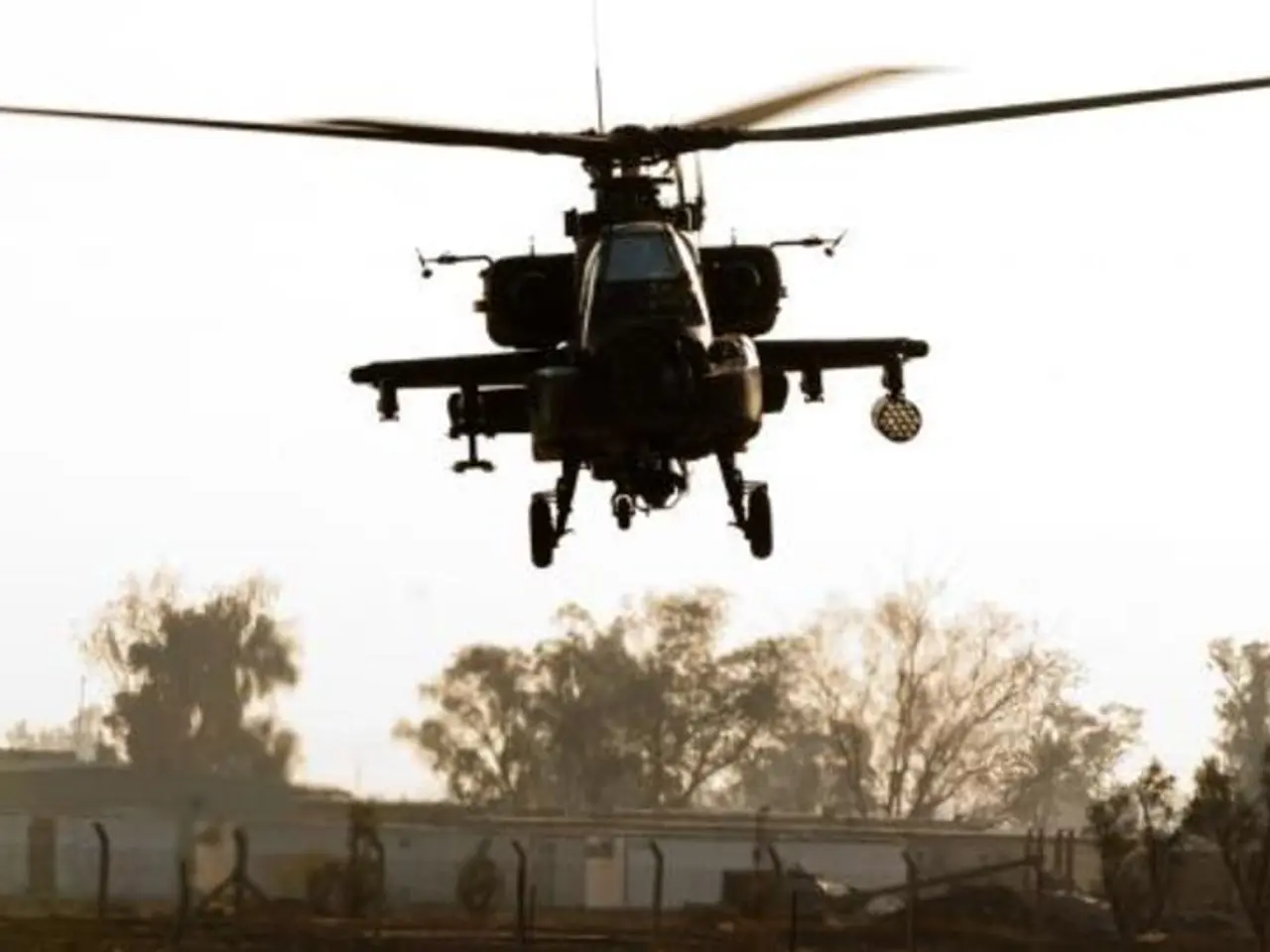Pentagon Urged to Accelerate Implementation of Small Drones and Their Countermeasures Against Threats
U.S. Military Steps Up Small Drone Capabilities under 2026 Defense Policy
The U.S. military is making significant strides in its efforts to bolster small unmanned aerial systems (sUAS) capabilities, as outlined in the 2026 defense policy bill. This push includes both defensive counter-UAS systems and offensive "one-way" attack drones.
Offensive Small Drones for Troops
Defense Secretary Pete Hegseth has directed that every Army squad be equipped with small, one-way attack drones by the end of fiscal 2026. Troops are now authorized to modify drones in the field to increase lethality and flexibility, a move aimed at overcoming prior policy restrictions and red tape limiting drone deployment [3][5].
Counter-Drone Defense
Congressional pressure is mounting on the Pentagon to make "substantial changes" in policy and priorities to rapidly improve counter-UAS systems. The intense global demand for such systems and underuse of existing authorities have been cited as concerns [1]. Protecting U.S. bases and forces from cheap, small drone threats is a priority in the draft 2026 National Defense Authorization Act [1].
Industrial Base and Acquisition Reform
The Pentagon aims to speed up innovation, fielding, and reliance on U.S.-made drones to reduce vulnerabilities from foreign sources. This includes rescinding previous policies that limited drone procurement or operation and supporting a robust drone manufacturing base [3][5].
Integration and Training
All relevant combat training will integrate drone operations, including force-on-force drone scenarios, reflecting the prioritization of small drones on par with major weapons systems [5].
Experimental Units
By September 2025, each military branch will establish active-duty experimental formations focused on rapid scale-up of small UAS fielding, particularly to Indo-Pacific Command units [5].
Looking Ahead
The 2026 defense policy framework and Pentagon initiatives are geared towards rapidly enhancing both offensive and defensive small drone capabilities across the U.S. military in response to evolving battlefield and strategic needs [1][3][5].
In other developments, drones of various sizes have been surveyed over Joint Base Langley-Eustis, Virginia, over the course of 17 nights in December 2023, and the military is still trying to determine who controlled them nearly a year after the incident [2]. Senators are also pushing the military's acquisition and research officials to revive American industry's ability to build small drones [4].
[1] House legislation requires the military to buy anti-drone defenses to protect four facilities or assets and deploy them within a year after the bill becomes law. The 2026 defense policy bill includes strong language in favor of deploying counter-drone systems. The Joint Counter-Unmanned Aircraft Systems Office is tasked with developing a counter-UAS strategy and working with U.S. Northern Command to roll out new equipment and tactics in the field. The House bill codifies the Pentagon's Joint Counter-Unmanned Aircraft Systems Office as the joint organization responsible for coordinating the military's efforts to defeat small drones.
[2] There was an incident where drones of various sizes surveyed Joint Base Langley-Eustis, Virginia, over the course of 17 nights in December 2023, and the military is still trying to determine who controlled them nearly a year after the incident.
[3] The Defense Department must make "substantial changes" to its policies and priorities to meet global demand for counter-drone systems. The Army's Coyote counter-UAS system, designed by Raytheon, could be useful for protecting Navy vessels. Lawmakers on both sides of Capitol Hill are pressing the Pentagon to deploy offensive small unmanned aerial systems as quickly as possible. The Republican-led tax-and-spending package provides $1.3 billion to bring on new counter-UAS equipment. Emil Michael, undersecretary of defense for research and engineering, mentioned recent directives from the White House and Pentagon look to broaden the scope of drones the military will accept.
[4] Senators are pushing the military's acquisition and research officials to revive American industry's ability to build small drones.
[5] The package includes $50 million to accelerate the development of autonomous, one-way attack drones, and $1 billion to grow the industrial base for those systems. The goal is to make drone warfare cheaper, more resilient, more powerful, and farther-reaching. The Air Force's Chief of Staff Gen. David Allvin emphasized the need for troops to train differently to defend bases from drones after decades without fear of airborne threats. By September 2025, each military branch will establish active-duty experimental formations focused on rapid scale-up of small UAS fielding, particularly to Indo-Pacific Command units. Operation Spiderweb damaged more than three dozen aircraft at bases deep inside Russia. Hegseth's July 10 memo allows base-level commanders to decide whether troops can use a certain drone rather than pushing that request up to the Pentagon's top echelons. The House legislation orders the Air Force to launch a pilot program with the FAA to detect and identify troublesome drones loitering by domestic military installations.
- The U.S. military is enhancing its small drone capabilities, focusing on both defensive counter-UAS systems and offensive one-way attack drones, as outlined in the 2026 defense policy bill.
- Defense Secretary Pete Hegseth has mandated that every Army squad be equipped with small, one-way attack drones by the end of fiscal 2026, authorizing troops to modify drones in the field for increased lethality and flexibility.
- Congressional pressure is mounting on the Pentagon to make significant changes in policy and priorities to rapidly improve counter-UAS systems, due to the intense global demand for such systems and underuse of existing authorities.
- The Pentagon aims to accelerate innovation, fielding, and reliance on U.S.-made drones, rescinding previous policies that limited drone procurement or operation and supporting a robust drone manufacturing base.
- All relevant combat training will integrate drone operations, including force-on-force drone scenarios, reflecting the increasing prioritization of small drones on par with major weapons systems.
- By September 2025, each military branch will establish active-duty experimental formations focused on rapid scale-up of small UAS fielding, particularly to Indo-Pacific Command units.
- The 2026 defense policy framework and Pentagon initiatives are designed to rapidly enhance both offensive and defensive small drone capabilities across the U.S. military in response to evolving battlefield and strategic needs.
- Senators are urging military acquisition and research officials to revitalize American industry's ability to build small drones, recognizing the growing importance of aviation technology, politics, and general-news in the context of space, warfare, air force, military, aircraft, satellite, and drones, as well as the Space Force.




